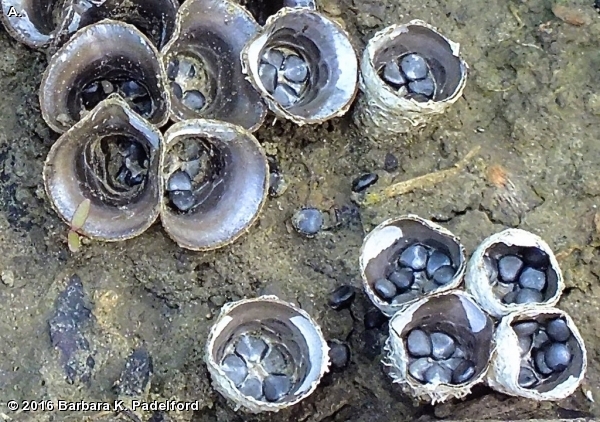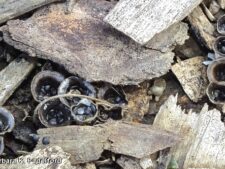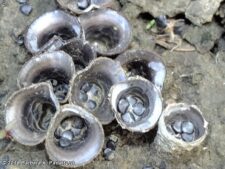
The fruiting body is vase shaped with a slender base flaring in the upper third at maturity. Fruiting bodies vary in size 5-12mm tall and 4-8 mm wide with a shaggy outer cover when young , smooth inner walls are visible when mature. The interior of the open mature fruiting bodies is lead gray to bluish black. The peridioles (eggs) are black and are distributed by the splash cup mechanism (see below). This fungus was identified by Katie Thompson a mycologist at Iowa State University.
Found on dung, wood chips and manured soil. This specimen was found on the wood chip path at the Insect pollination garden near the wetlands learning center. It is probably rare in Fontenelle Forest.
These odd and fascinating little fungi look like tiny birds’ nests. The fruiting bodies form little cuplike nests which contain spore-filled eggs. The nests are called “peridia” and serve as splash cups; when raindrops strike the nest, the eggs (called “periodoles”) are projected into the air, where they latch onto twigs, branches, leaves, and so on. Five genera–Crucibulum, Cyathus, Mycocalia, Nidula, and Nidularia–are included among the bird’s nests in North America
The content of NatureSearch is provided by dedicated volunteer Naturalists of Fontenelle Forest who strive to provide the most accurate information available. Contributors of the images retain their copyrights. The point of contact for this page is: Eric Scholar.


